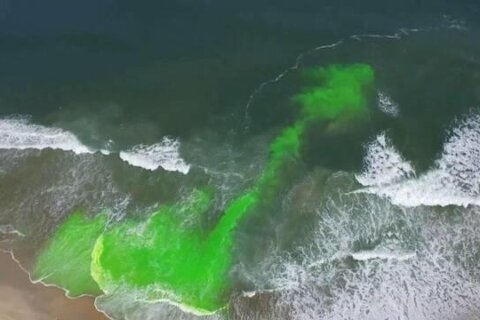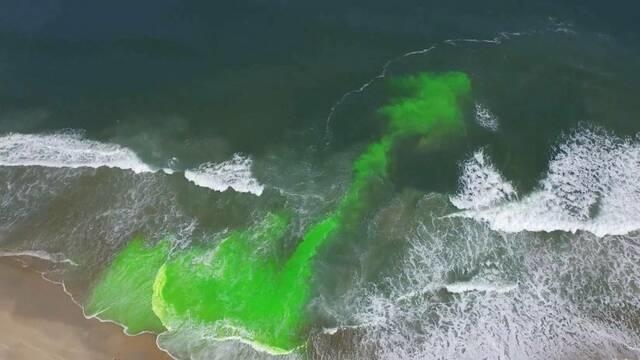
Rip currents are narrow channels of fast-moving water that commonly occur along U.S. coastlines and are the reason for more than 80% of beach rescues.
Anywhere there are waves, rip currents can form. And while they can develop during any kind of weather or conditions, they most often occur during low tide when waves are at least 2 feet tall.
When waves crash onto shore, they create currents, but sometimes those currents move perpendicular to land and create the rip currents that flow offshore. They are dangerous and can pull swimmers out to sea at rapid speeds.
“Rip current” is sometimes incorrectly referred to as a “rip tide.” Rip currents, while influenced by tides, are ultimately created by waves hitting the bottom of the shore.
While rip currents are dangerous, it’s how we react to them that can turn them deadly.
Why are rip currents so dangerous?
According to the National Oceanic and Atmospheric Administration, rip currents kill 100 people every year in the U.S. They can occur on any of the coasts, including along the Great Lakes.
In North Carolina, researchers found that 25% to 30% of all rip current drownings were individuals going in to rescue someone else, Greg Dusek, a senior scientist at NOAA’s National Ocean Service, told CBS News.
To compare, sharks killed one person in the U.S. in 2022.
What causes rip currents?
Lifeguards rescue 30,000 swimmers from rip currents every year in the U.S. While many believe rip currents only occur during storms or bad weather, that’s a misconception: They can occur in any weather, at any time and can be difficult to spot.
Dusek said three primary sources influence rip currents: waves, the tide or water level, and the shape of the bottom of the coastline.
Rip currents often form in shallow waters where there are breaks in sandbars or along structures such as jetties and piers.
How can you spot a rip current?
Keep an eye out for rip currents by looking for breaks in waves where foam, seaweed or sand is being pulled away from shore.
The safest way to prepare for a day at the beach is to go to a beach with a lifeguard, American Lifeguard Association national spokesperson Wyatt Werneth told CBS News. If a beach’s website does not mention lifeguard hours, Werneth said, it most likely doesn’t have one.
According to the U.S. Lifesaving Association, the chance of drowning at a beach with a lifeguard is 1 in 18 million.
Werneth and Dusek said beachgoers should adopt a “know before you go” policy. Before visiting a beach, check local forecasts for any beach warnings. Check NOAA’s Nearshore Wave Prediction System, which predicts rip current conditions, or visit weather.gov/beach for beach forecasts across the country.
How can you escape a rip current?
Rip currents can move as quickly as 8 feet per second.
The conventional wisdom for what to do if you’re caught in a rip current is to swim parallel to shore to try and escape it. But Werneth warned that isn’t always best — rip currents can be up to 50 feet wide and you can easily swim out of one and into another.
It doesn’t matter how strong of a swimmer you are, Werneth said, if caught in a rip the best thing to do is to stay calm, try to float on the surface and call for help. Rip currents sit on the water’s surface and won’t pull you under. Trying to play tug-of-war with the rip and swimming straight to shore will only tire a swimmer out and increase the chance of drowning.
If you see someone struggling, never go in to help them without a floatation device. If a lifeguard is not present, call 911.








